Chickens are fascinating creatures, and each breed has its unique characteristics.
The Brahma chicken is no different. It is often referred to as the “king of poultry”, and deservedly so.
The Brahma chicken, a heritage breed, is one of the oldest chicken breeds in modern poultry, dating back to the early 19th century. It has a long and rich history with origins in China and India. While there are other large birds, the Brahma stands out with its regal stance and feathered feet.
Brahmas are believed to be one of the largest chicken breeds in poultry, second only to the Jersey Giant.
In this blog post, we will cover everything you should know about the Brahma chicken breed.
We’ll explore its history, varieties, and outstanding characteristics that make it one of the most beloved breeds in the world.
If you are considering adding a Brahma chicken to your flock, read on to learn more!
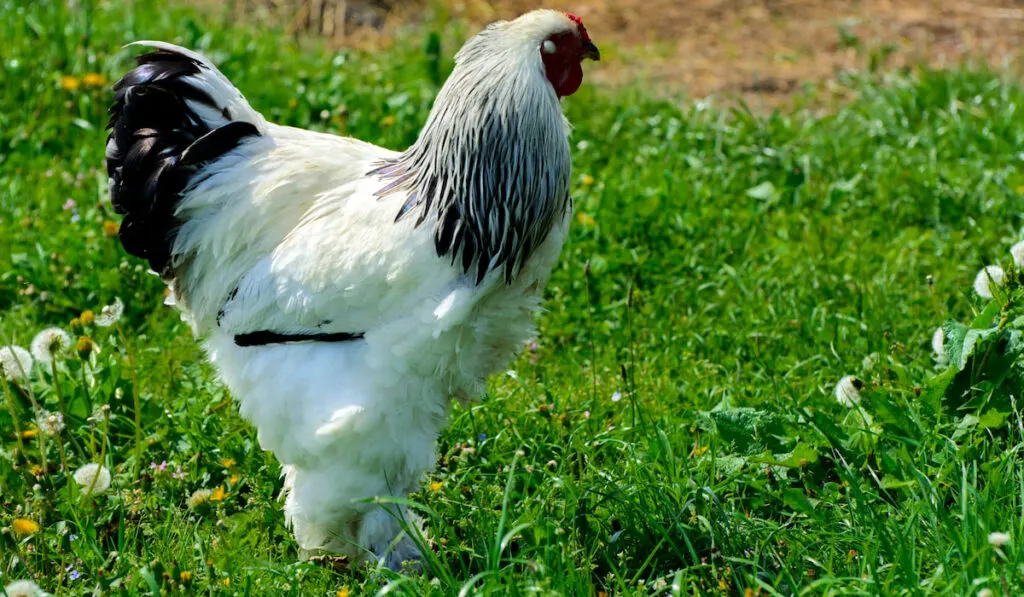
Table of Contents
History
Over the years, there have been various claims about the origin of the Brahma chicken. Some claim it’s from China; others believe it’s from India.
In actuality, the Brahma chicken breed originated in the United States.
As documented by Livestock Conservancy, China opened up its ports to international trade in the mid-19th century, and as a result, exotic breeds were imported into the US.
Among the different breeds imported were large feather-footed birds from cities near Shanghai.
The Brahma chicken was developed by crossing Shanghai chickens (now called Cochins) with the Indian Chittagong chicken.
The resulting hybrid was much larger and more productive than its parent breeds. It quickly became popular among American farmers due to its size and egg-laying ability.
The breed, now called Brahma, was known under at least 12 different names in the mid-1800s. These different names led to confusion among people.
Eventually, T.B. Miner, in his publication for the Northern Farmer in 1854, adopted the name Brahma for the breed.
It’s believed that the Brahma chicken is named after the Hindu god of creation, Lord Brahma. Although, it is unclear why.
The first variety of the Brahma chicken was the light Brahma. It was shipped to the United Kingdom alongside Shanghai chickens in 1852.
This pair sparked what was known as “hen fever” across America and Europe in the 19th century. The dark Brahma was developed in England from the light Brahma and shipped back to America.
As they gained popularity, many farmers wanted these chickens, as did homesteaders and those who wanted them just for show.
As the demand for the birds increased, so did the prices. Consequently, the prices of these birds skyrocketed until most people couldn’t afford to buy or keep them.
However, the Brahma chicken remained popular and was America’s chief meat breed from 1850 to 1930.
The light and dark Brahmas were accepted as standard by the American Poultry Association in 1874. The relatively new buff variant was accepted later, in 1924.
Today, Brahma chickens are still popular among backyard chicken enthusiasts and small-scale farmers. They are also common in the poultry industry, where they are raised for their meat and eggs.
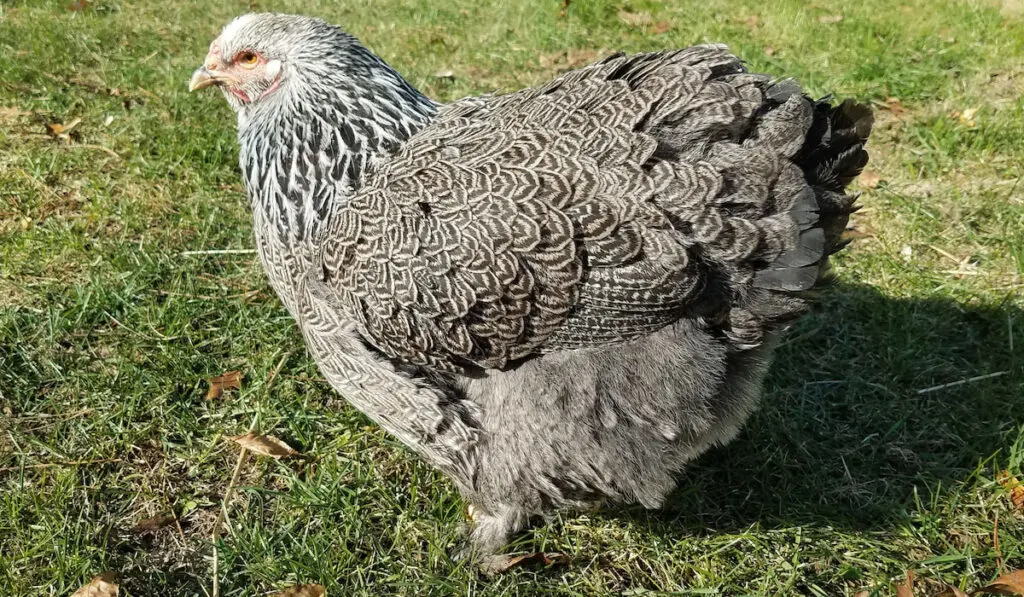
Brahma Chicken: Key Information
| Breed Name | Brahma |
| Other names | Asiatic fowl, Large fowl |
| Breed Classification | Large |
| Colors | Light, dark, and buff |
| Weight | 9.5 lbs. – 12 lbs. |
| Temperament | Friendly, docile, and calm |
| Purpose | Dual-purpose—meat and eggs |
| Productivity | Good |
| Egg size | Medium to large |
| Egg color | Brown |
| Feathered legs | Yes |
| Comb | Pea comb |
| Broodiness | Good |
Description
Brahma chickens have a long, deep, and wide body. They also have yellow skin, shanks, toes, and beaks, with red pea combs, wattles, earlobes, and reddish-brown eyes.
These birds have a wide head with their skull protruding over their eyes, known as the “beetle brow”. Their eyes are deeply set, giving them an almost stern facial expression.
These birds have dense feathers which cover them from head to shank and toes.
This feathering of their legs causes the legs to appear as a narrow “V” when viewed from the side.
Brahmas can stand up to 30 inches tall and have an upright carriage that gives them their recognized stately appearance. They have four toes on each feathered foot and yellow-colored soles.
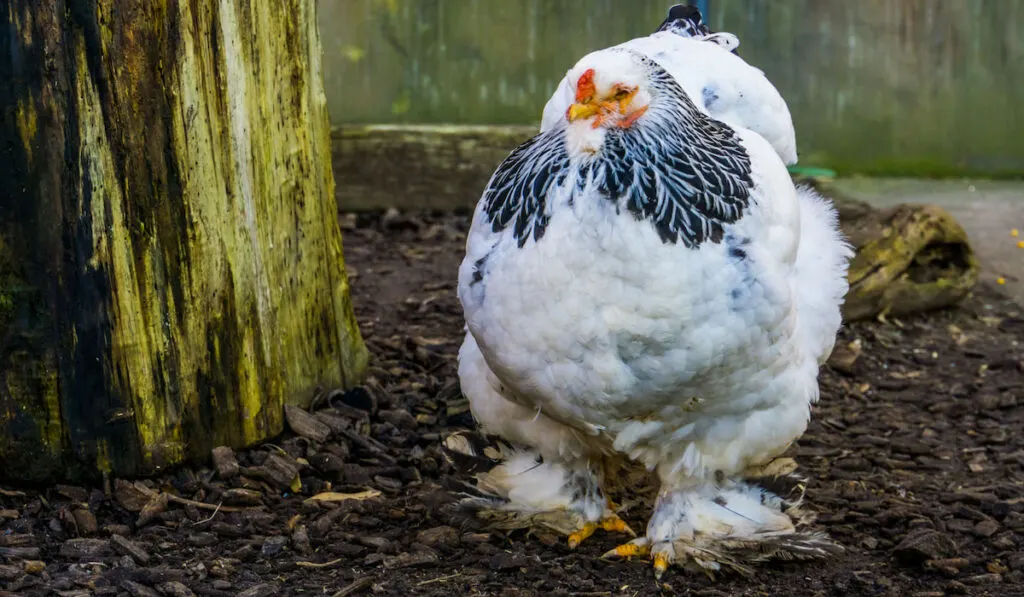
Brahma Chicken Varieties
There are three recognized varieties of Brahma chicken.
- Light Brahma
- Dark Brahma
- Buff Brahma
Light Brahma
The light Brahma variety is the most common and is often mistaken for a white chicken. It has dense white down feathers that start from the crown of its head and extend to the toes.
It also has black stripes on its hackle feathers and back. The tail sickle feathers are also black.
Dark Brahma
The dark Brahma variety is less common and has black feathers with greenish-black shading.
The dark Brahma hen has distinct silver pencil-patterned feathers. The hackle and saddle feathers are white with black stripes. They also have black sickle tails.
Roosters have silvery-white feathers on their head, neck, saddle, and breast. Their tail feathers are black, long, and sickle-like. Their wing feathers are also black.
Like the light Brahma, they have dense down feathers all over, including their shanks and toes.
Buff Brahma
The buff Brahma variety is the rarest and has gold-colored feathers.
They have impressive dark gold feathering on their head, neck, back, and wings. Their underbelly, thighs, legs, and toes have a lighter gold shade.
Their hackles and back feathers have black penciling, just like the light Brahma. The sickle feathers of their tails are black like those seen on the other varieties.
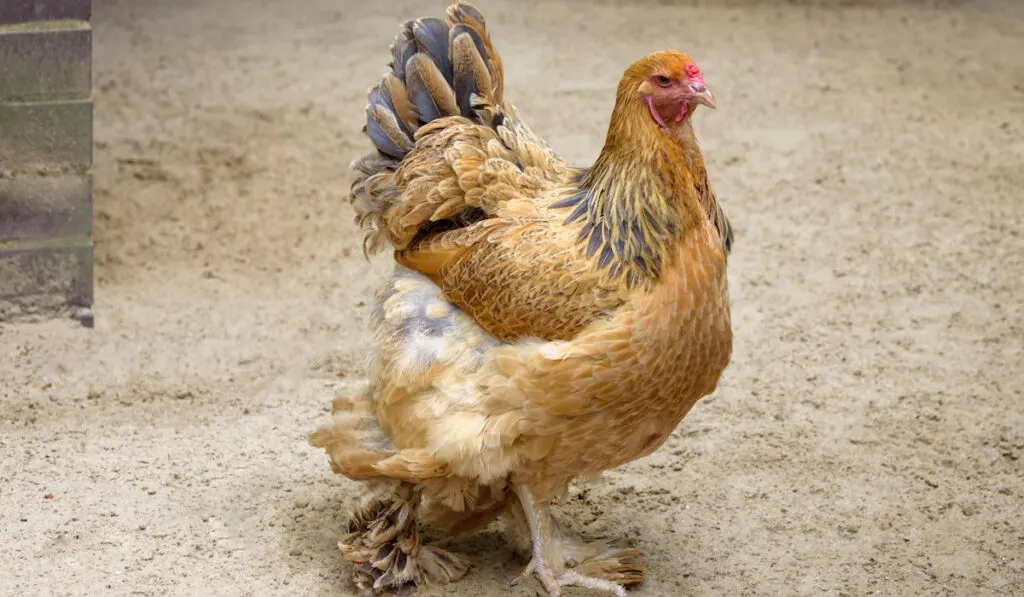
Characteristics of the Brahma Chicken
Brahma chickens are large and can weigh up to 10 pounds or more. They have long necks and legs, and their skin, shanks, and soles are yellow.
Brahmas are dual-purpose chickens raised for both eggs and meat.
However, they are slow-growing and slow-maturing birds. They take longer than the average chicken to reach their full size.
Since they are large birds, they are good meat birds. They produce more than enough meat to serve a moderate-sized family.
Brahmas are also hardy birds. They can withstand cold weather well. However, because of their large size and dense feathering, they do not do well in hot weather and can overheat easily.
The Brahma chicken has a bantam variant.
Behavior/Temperament
Brahma chickens are large, gentle giants that make great backyard chickens. They have a friendly disposition. They are also docile and calm and are safe to be raised around children.
They are not particularly noisy, although they can be vocal when they want attention.

Brahma vs. Cochin: Any Difference
Since Brahmas were developed from Cochins, it’s no wonder they appear similar.
Despite the similarities in their appearance, there are a few things that can help you distinguish between the two breeds.
Brahmas appear to have longer legs, a longer neck, and a more stately appearance than Cochins. They have dense down feathers that stay close to their bodies.
These birds also have a straight back that runs parallel to their shoulders and a pronounced tail. They have a single pea comb, deep-set eyes, and a stern expression.
Cochins, on the other hand, have shorter legs and an equally shorter neck. They are more heavily feathered (from head to toe) than Brahmas.
Their feathers are fluffy and make them appear bigger than they are. Their body is more rounded, with almost no tail, and have a single-type comb.
Standard Weights
The standard weights of Brahma chickens are as follows:
- Rooster: 12 lbs.
- Hen: 9.5 lbs.
- Cockerel: 10 lbs.
- Pullets: 8 lbs.
Lifespan
The average life expectancy of Brahma chickens is between 5 and 8 years.
Egg Laying
One of the interesting things about the Brahma chicken breed is their egg-laying abilities.
Brahma chickens are excellent layers of medium to large brown eggs. They can lay up to 200 eggs yearly, which is more than some chicken breeds.
Brahmas are known to be strong winter layers, producing eggs normally during winter, as they would in other seasons.
However, the average Brahma pullet can take up to 28 weeks to start laying eggs.
Broodiness and Brooding
Brahma hens are good brooders. They’ve been known to dutifully sit on their eggs to ensure they hatch.
Being large birds, they sometimes break some of the eggs they sit on. They could also accidentally hurt their chicks.
To prevent this from happening, you can ensure that the nesting box is spacious, the floor of the nesting box is cushioned, and the brooding process is monitored.
Nonetheless, Brahma hens make good mothers and are very protective of their chicks.
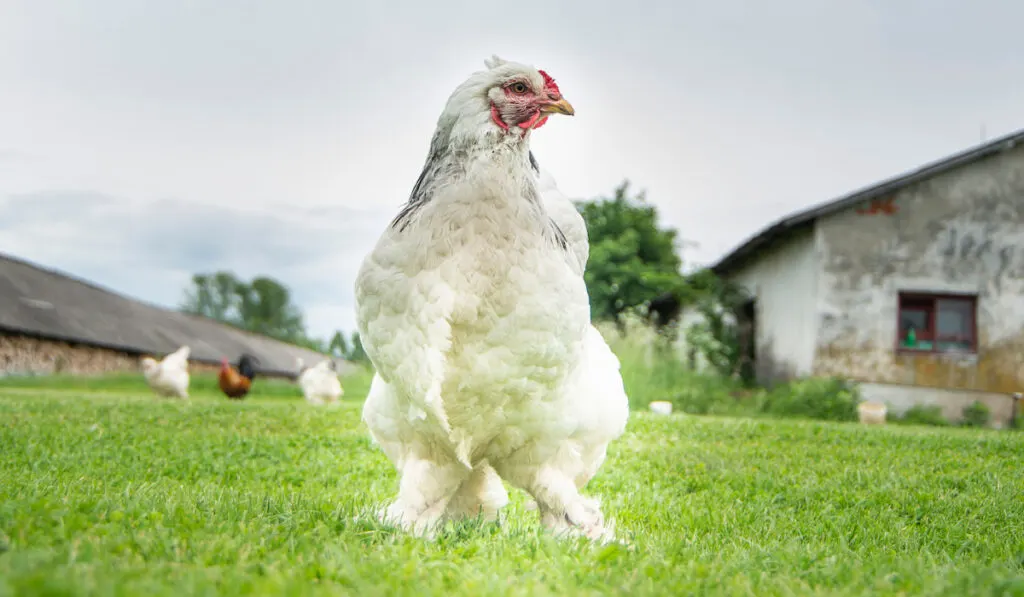
Coop Set-up
There are a few things you’ll need to consider when setting up a coop for Brahmas. They include the following:
Space
Brahmas require more space than the average chicken because of their size. Make sure the coop is big enough for them to move around comfortably and have enough room to stretch their wings.
A minimum of 8 square feet per chicken is recommended.
Ventilation
It’s also important to make sure the coop has good ventilation. Brahmas are known for being quite lazy, and they don’t like hot weather.
If your coop isn’t well-ventilated, it can get very stuffy inside, making your chickens uncomfortable.
Security
Finally, because Brahmas are such a docile breed, they can be easy prey for predators.
Make sure the coop is solid and secure, with no gaps that a predator could squeeze through.
Putting these precautions in place will ensure that your Brahma chickens are happy and healthy in their new home.

Care and Maintenance
Brahma chickens are generally low maintenance. However, a few things need to be put in place for them to thrive.
They include the following:
Adequate Spacing
As stated above, be sure to provide them with plenty of space. Also, ensure that the coop ceiling is at least two feet above their heads.
Diet
Make sure their diet is well-balanced. Brahmas are prone to obesity, so it’s essential to ensure they get enough protein and vegetables and not just carbs or fats.
A good quality chicken feed with 16-18% protein will typically suffice, but you can supplement it with some greens or other healthy snacks.
Foot Care
Very importantly, keep an eye on their feet. Due to the feathering of their legs and feet, their feet can easily be covered in dirt, and the feathers can soak up moisture.
Accumulation of dirt and moisture can predispose them to infections. Their large size can also predispose them to leg or foot injuries; hence, you’ll need to pay close attention to their feet.
Inspect their feet regularly and seek veterinary help if you notice any issues.
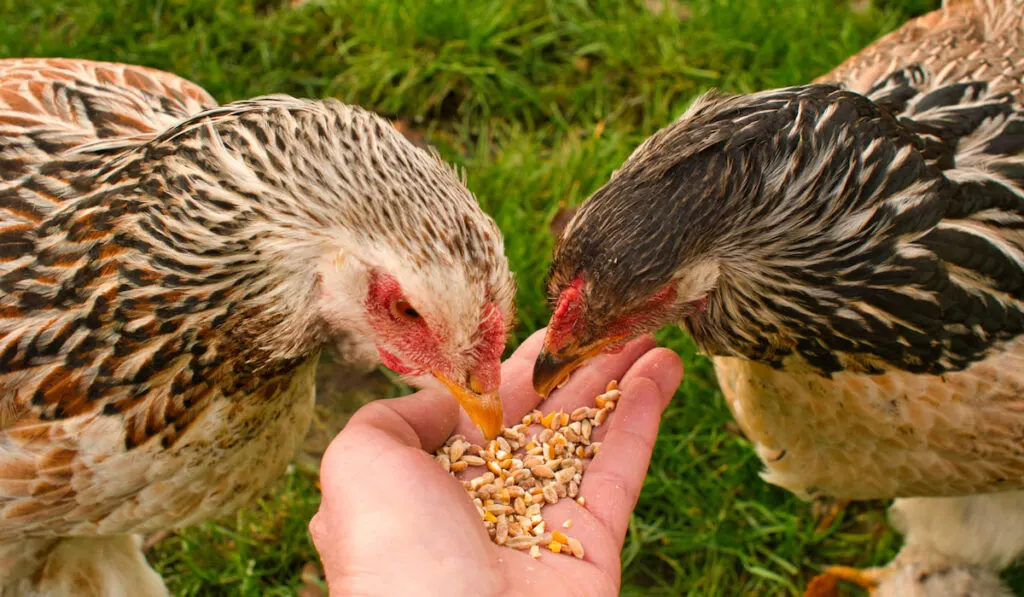
Feeding and Nutrition
Proper feeding and nutrition are essential for chickens to thrive, much like any other species. A chicken’s diet consists of various things, including seeds, bugs, and vegetables.
Brahmas are no different in this regard, and their diet should be well-rounded and nutritious to maintain their health.
A common misconception is that chickens only eat grain, but this isn’t the case. In fact, chickens are omnivores and will consume just about anything you offer them.
A typical Brahma diet may include the following:
- Compounded feed (such as starter or grower mash)
- Grain (such as wheat or corn)
- Vegetables (such as carrots or greens)
- Fruits (such as apples or berries)
- Bugs (such as crickets)
Another important aspect of Brahma care is ensuring they have access to clean water at all times. A water bowl or trough should be placed in their coop or run and filled with fresh, clean water daily.
It’s a good idea to offer them a variety of food items so that they can get all the nutrients they need.
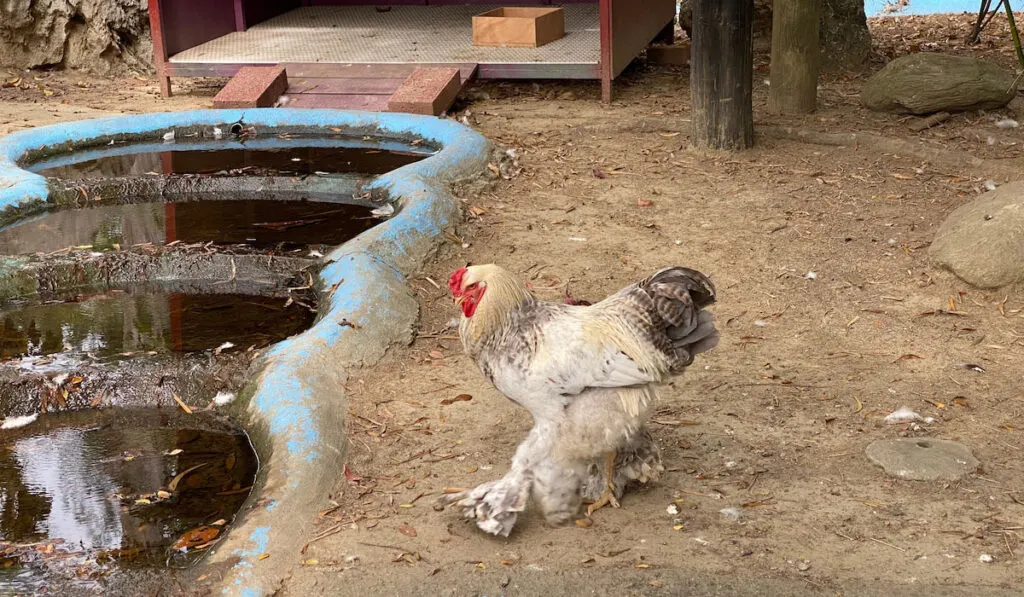
Common Health Issues
Common health issues that affect Brahma chickens include the following:
Bumblefoot
Bumblefoot is a bacterial infection that results in swelling and inflammation of the footpad. This condition can affect any chicken but is more common in larger breeds like the Brahma.
Bumblefoot can be painful and, if left untreated, can progress to severe complications.
Coccidiosis
Coccidiosis is a protozoan disease of poultry characterized by bloody diarrhea, dehydration, and weight loss. If left untreated, it can be fatal.
It’s prevalent among young birds. So, you should take the necessary steps to protect your birds.
Gapeworm
Gapeworm is another parasitic infection that can affect any chicken.
Gapeworms live in the respiratory system and cause respiratory problems like coughing and gasping for breath. If left untreated, it may lead to death.
Infectious Bronchitis
This viral respiratory infection affects chickens of all ages and sizes. Infectious bronchitis causes severe respiratory distress and can be fatal if left untreated.
Ensure you talk to your veterinarian about the appropriate preventive measures.
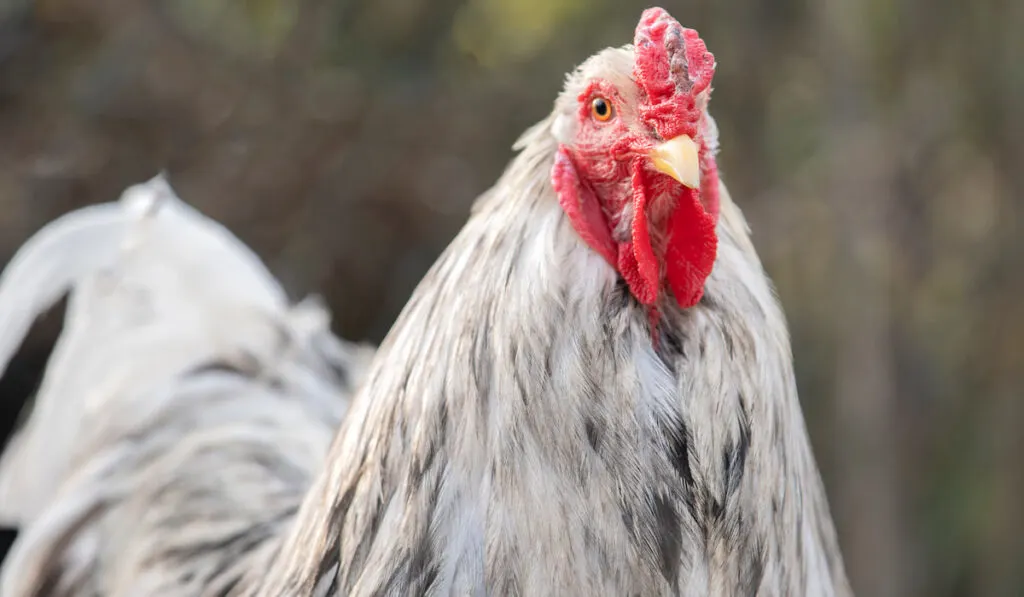
Conclusion
In conclusion, the Brahma Chicken is a hardy breed of chicken that can make a great addition to your flock.
They are friendly and docile and excel at foraging and free ranging, making them an ideal choice for small farms and suburban backyard coops.
Their large size makes them excellent egg producers and efficient meat chickens.
If you’re looking for an easy-to-care-for poultry breed with plenty of benefits, the Brahma chicken should be on your list of potential breeds to consider!
Resources
- https://backyardpoultry.iamcountryside.com/chickens-101/brahma-chicken-july-breed-of-the-month
- https://www.backyardchickencoops.com.au/blogs/learning-centre/breed-profile-brahma
- https://livestockconservancy.org/heritage-breeds/heritage-breeds-list/brahma-chicken
- https://www.chickensandmore.com/brahma-chicken
- https://www.backyardchickencoops.com.au/blogs/learning-centre/breed-profile-brahma
- https://www.roysfarm.com/brahma-chicken
- https://learnpoultry.com/brahma-chickens
- https://www.hobbyfarms.com/breed-profile-get-to-know-brahma-chicken
- https://www.thechickhatchery.com/product/dark-brahma
- https://www.purelypoultry.com/index.php?main_page=product_info&products_id=1465
- https://www.backyardchickens.com/threads/brahma-and-cochin-comparison.625779
- https://blog.phoenixagribiz.com.ng/2022/09/brahma-chicken-breed-size-colors-egg.html
- https://chickenandchicksinfo.com/facts-about-brahma-chickens/
- https://www.heritageacresmarket.com/brahma-chicken/
